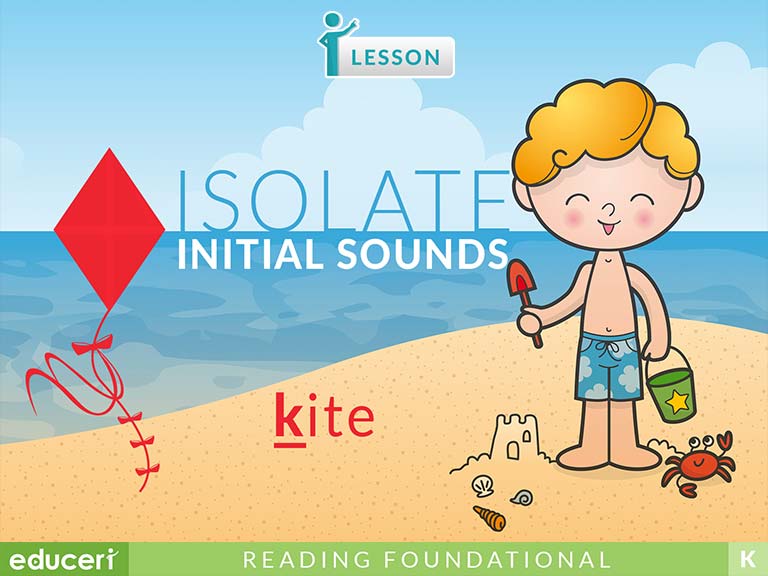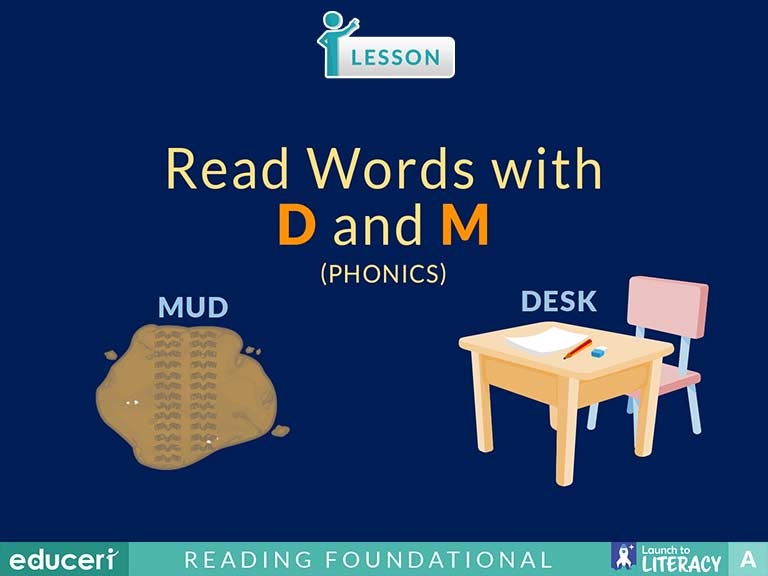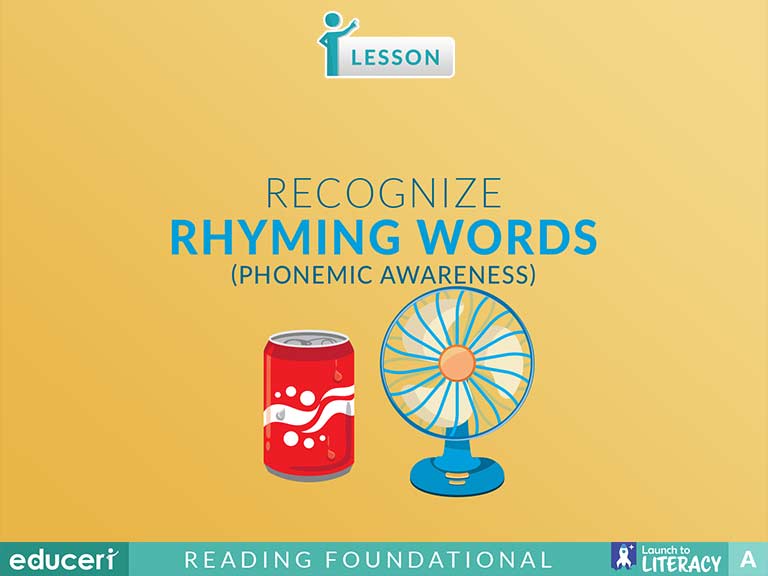All Lessons

Recognize Rhyming Words
This phonics lesson gives students practice in recognizing rhyming words with short and long vowel sounds. Teacher instructions are included throughout the lesson.
Share This Lesson

Blend Words
This phonics lesson covers how to sort words into categories. The lesson includes research-based strategies and strategic questions that prepare students for assessments. Blending is presented as word play activities in Guided Practice 1 and beyond. This lesson should focus on students’ phonological awareness, meaning they should only be listening to the words not reading them. The terms onsets and rimes were purposely not used in this lesson due to the difficulty level for kindergartners.
Share This Lesson

Share This Lesson

Isolate Initial Sounds F, V, P, B
This phonics lesson involves isolating initial sounds in words. The lesson includes research-based strategies and strategic questions that prepare students for assessments. In this lesson, students will practice isolating and pronouncing initial sounds (phonemes) in spoken single-syllable words. Flashcards are provided as an extra resource.
Share This Lesson

Isolate Initial Sounds M, N, L, R
RF.K.2 Demonstrate understanding of spoken words, syllables, and sounds (phonemes).
RF.K.2.DRF.K.2.D Isolate and pronounce the initial, medial vowel, and final sounds (phonemes) in three-phoneme (consonant-vowel-consonant, or CVC) words. (This does not include CVCs ending with /l/, /r/, or /x/.)
This phonics lesson involves isolating initial sounds in words. The lesson includes research-based strategies and strategic questions that prepare students for assessments. In this lesson, students will practice isolating and pronouncing initial sounds (phonemes) in spoken single-syllable words. Flashcards are provided as an extra resource.
Share This Lesson

Isolate Initial Sounds S, SH, CH, J
RF.K.2 Demonstrate understanding of spoken words, syllables, and sounds (phonemes).
RF.K.2.DRF.K.2.D Isolate and pronounce the initial, medial vowel, and final sounds (phonemes) in three-phoneme (consonant-vowel-consonant, or CVC) words. (This does not include CVCs ending with /l/, /r/, or /x/.)
This phonics lesson is focused on segmenting single-syllable words into phonemes. The lesson includes research-based strategies and strategic questions that prepare students for assessments. Lesson covers the following sound /s/, /sh/, /ch/, and /j/. Flashcards for initial sounds are provided in a separate file.
Share This Lesson

Isolate Final Sounds
RF.K.2 Demonstrate understanding of spoken words, syllables, and sounds (phonemes).
RF.K.2.DRF.K.2.D Isolate and pronounce the initial, medial vowel, and final sounds (phonemes) in three-phoneme (consonant-vowel-consonant, or CVC) words. (This does not include CVCs ending with /l/, /r/, or /x/.)
Share This Lesson

Read High-Frequency Words
This phonics and word recognition lesson includes research-based strategies and strategic questions that prepare students for assessments. This lesson provides mini-concepts and skill developments for 24 high-frequency words. The words have been separated into groups of 3 and the order they are taught is at the discretion of the teacher. An extra practice table of high-frequency words is available in a separate file.
Share This Lesson











